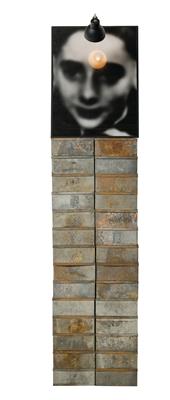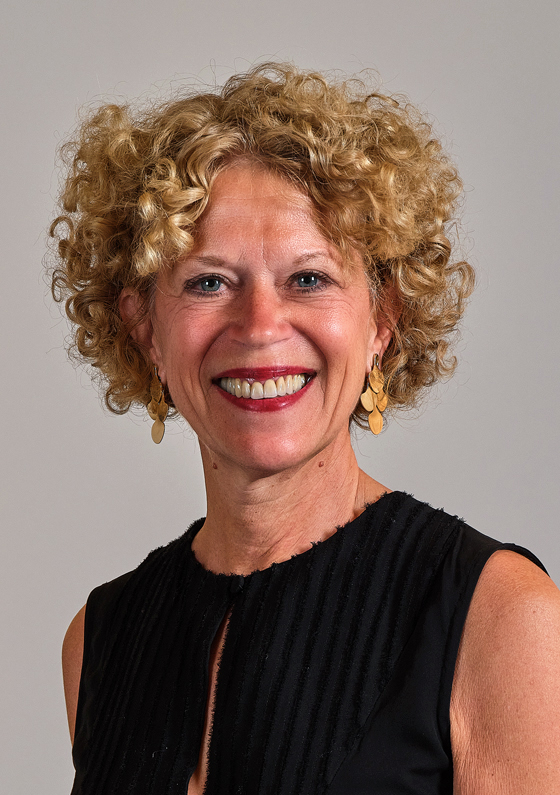Christian Boltanski *

(born in France in 1944)
Monument: La Fête de Pourim, 1989–2012, installation of 28 tin boxes (each tin box 9 x 23 x 22 cm), 1 b/w photograph framed with black tape (60 x 46 cm), lamp cable, 192 x 46.5 x 22 cm
Certificate of authenticity by Christian Boltanski, Malakoff 20.1.2017, signed by the artist
Provenance:
Galerie Kewenig Berlin
Private Collection, North-Rhine Westphalia - acquired from the above
Exhibited:
1995 Santiago de Compostela, “Advento and other times”, church of St. Domingo de Bonaval
1997 Seoul, “Le voyage d’hiver”, National Museum of Contemporary Art 1999 Caracas and Bogota, “Sombras” Museo de Bellas Artes and Biblioteca Luis Angel Arango
2001 Warsaw, “Revenir”, Centrum Sztuki Wspólczesnej, Zamek Ujazdowski 2019–2020 Bremen, “So wie wir sind 1.0”, Weserburg Museum
“The task of an artist is to ask questions, not give answers. If I had been born earlier and on the Amazon and not in Paris, I might have become a shaman. Or a rabbi, if I were from Kiev. The only difference is that I create artwork to ask my questions. And the basic idea - the basis for all these questions remains - that everyone, even the most wonderful person, will be forgotten. We are not only replaceable, we are being replaced.”
(Christian Boltanski Interview Art-Magazin 1/2020, p. 42 ff)
Christian Boltanski’s works serve as a catalyst for gaining reality and, as places of memory, they trigger processes in the viewer to deal more intensively with one’s own self. In his work, Christian Boltanski, who was born only a few days after the liberation of Paris in 1944, not only deals intensively with his own life memory, but also with that of his ancestors. His works are, in his own eyes, of unimaginable fragility, which has to be handled with great care. With this, Christian Boltanski does not allude to the material characteristics of the mountainous heaps of clothing or tin cans, but to the inner values, the fleeting constructs of the works.
The biscuit tins serve him as archives of memory. With the installations, which have an altar-like character, Christian Boltanski visualises the passing of time, the brevity of a human life and the extinction of life. In the ethnology of Chile, Christian Boltanski was particularly inspired by the small shrines standing by the roadside, which create a connection to the many small souls of the dead that surround us living beings. For him, the altar becomes a symbol of the memory of the forgotten. The photo, deliberately enlarged into blurriness and illuminated by a lamp, is one of the many photographic finds that the artist integrates into his work. The photo is part of an invented story of an unknown person, who is given a platform with this piece of work. His favourite material, the rusty biscuit tins, visually and materially preserve the fleeting memories of human existence and form extensive archives of human history. Christian Boltanski thus creates monumental works of remembrance that will even outlive him, and his own materiality. “My interest in the transience of human life has taught me to cherish every moment. Life is incredibly tragic in my eyes. Worse than that. It’s horrible. Everything is full of gruesome things, we’re monsters. We’re not doing anything about it. It’s really ridiculous. But fortunately we possess the power to forget. The power of lightness. We know all of this, but for a moment we can forget. Forgetting is stronger than memory.”
(Christian Boltanski Interview Monopol-Magazin Sep. 2019 www.monopol-magazin.de/ein-kaempfer-gegen-das-vergessen)
Esperta: Dr. Petra Maria Schäpers
 Dr. Petra Maria Schäpers
Dr. Petra Maria Schäpers
petra.schaepers@dorotheum.de
24.06.2020 - 16:00
- Prezzo realizzato: **
-
EUR 37.800,-
- Stima:
-
EUR 30.000,- a EUR 50.000,-
Christian Boltanski *
(born in France in 1944)
Monument: La Fête de Pourim, 1989–2012, installation of 28 tin boxes (each tin box 9 x 23 x 22 cm), 1 b/w photograph framed with black tape (60 x 46 cm), lamp cable, 192 x 46.5 x 22 cm
Certificate of authenticity by Christian Boltanski, Malakoff 20.1.2017, signed by the artist
Provenance:
Galerie Kewenig Berlin
Private Collection, North-Rhine Westphalia - acquired from the above
Exhibited:
1995 Santiago de Compostela, “Advento and other times”, church of St. Domingo de Bonaval
1997 Seoul, “Le voyage d’hiver”, National Museum of Contemporary Art 1999 Caracas and Bogota, “Sombras” Museo de Bellas Artes and Biblioteca Luis Angel Arango
2001 Warsaw, “Revenir”, Centrum Sztuki Wspólczesnej, Zamek Ujazdowski 2019–2020 Bremen, “So wie wir sind 1.0”, Weserburg Museum
“The task of an artist is to ask questions, not give answers. If I had been born earlier and on the Amazon and not in Paris, I might have become a shaman. Or a rabbi, if I were from Kiev. The only difference is that I create artwork to ask my questions. And the basic idea - the basis for all these questions remains - that everyone, even the most wonderful person, will be forgotten. We are not only replaceable, we are being replaced.”
(Christian Boltanski Interview Art-Magazin 1/2020, p. 42 ff)
Christian Boltanski’s works serve as a catalyst for gaining reality and, as places of memory, they trigger processes in the viewer to deal more intensively with one’s own self. In his work, Christian Boltanski, who was born only a few days after the liberation of Paris in 1944, not only deals intensively with his own life memory, but also with that of his ancestors. His works are, in his own eyes, of unimaginable fragility, which has to be handled with great care. With this, Christian Boltanski does not allude to the material characteristics of the mountainous heaps of clothing or tin cans, but to the inner values, the fleeting constructs of the works.
The biscuit tins serve him as archives of memory. With the installations, which have an altar-like character, Christian Boltanski visualises the passing of time, the brevity of a human life and the extinction of life. In the ethnology of Chile, Christian Boltanski was particularly inspired by the small shrines standing by the roadside, which create a connection to the many small souls of the dead that surround us living beings. For him, the altar becomes a symbol of the memory of the forgotten. The photo, deliberately enlarged into blurriness and illuminated by a lamp, is one of the many photographic finds that the artist integrates into his work. The photo is part of an invented story of an unknown person, who is given a platform with this piece of work. His favourite material, the rusty biscuit tins, visually and materially preserve the fleeting memories of human existence and form extensive archives of human history. Christian Boltanski thus creates monumental works of remembrance that will even outlive him, and his own materiality. “My interest in the transience of human life has taught me to cherish every moment. Life is incredibly tragic in my eyes. Worse than that. It’s horrible. Everything is full of gruesome things, we’re monsters. We’re not doing anything about it. It’s really ridiculous. But fortunately we possess the power to forget. The power of lightness. We know all of this, but for a moment we can forget. Forgetting is stronger than memory.”
(Christian Boltanski Interview Monopol-Magazin Sep. 2019 www.monopol-magazin.de/ein-kaempfer-gegen-das-vergessen)
Esperta: Dr. Petra Maria Schäpers
 Dr. Petra Maria Schäpers
Dr. Petra Maria Schäpers
petra.schaepers@dorotheum.de
|
Hotline dell'acquirente
lun-ven: 10.00 - 17.00
kundendienst@dorotheum.at +43 1 515 60 200 |
| Asta: | Arte contemporanea I |
| Tipo d'asta: | Asta in sala |
| Data: | 24.06.2020 - 16:00 |
| Luogo dell'asta: | Wien | Palais Dorotheum |
| Esposizione: | 18.06. - 24.06.2020 |
** Prezzo d'acquisto comprensivo di tassa di vendita e IVA
Non è più possibile effettuare un ordine di acquisto su Internet. L'asta è in preparazione o è già stata eseguita.
